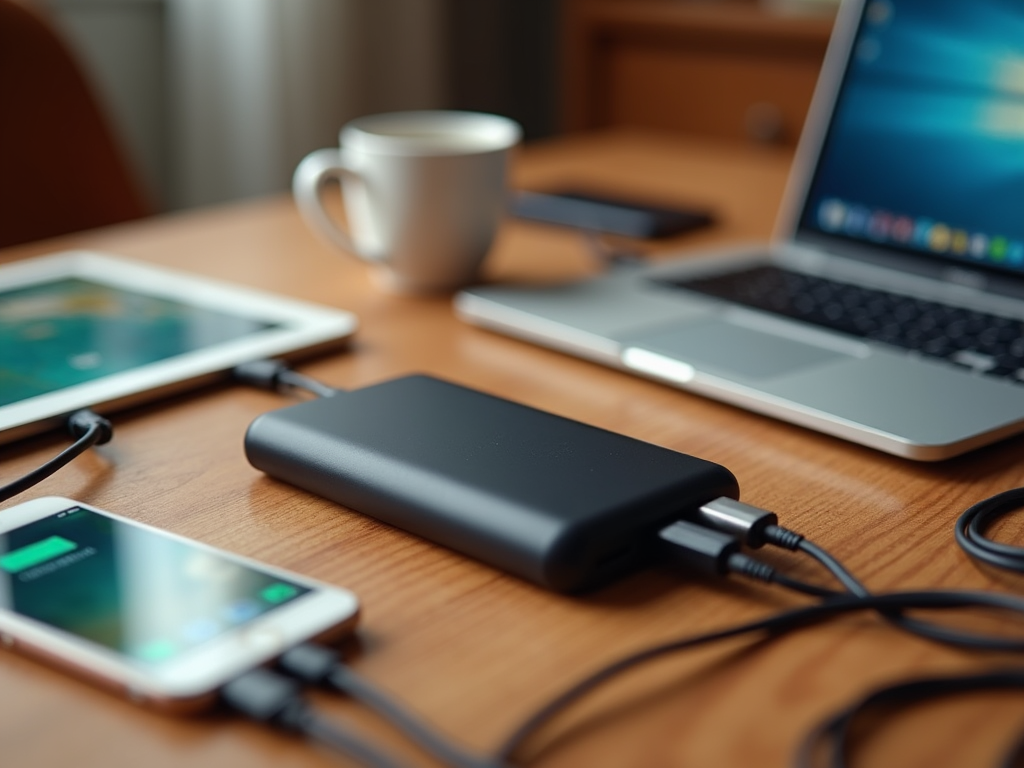In a world where staying powered up on the go is more critical than ever, selecting the right power bank can be a complex decision. With various options in terms of size, capacity, and features, it’s easy to feel overwhelmed. However, failing to choose wisely can lead to unsatisfactory performance or, worse, damage to your beloved electronics. Some users rush into buying a power bank based solely on price or brand reputation, ignoring several essential factors that could impact their experience significantly. This article aims to highlight crucial mistakes to avoid so you can make a well-informed choice. By understanding your needs and the features available, you can select a power bank that suits your lifestyle without compromise.
Understanding Your Power Needs

When selecting a power bank, it’s essential to assess your specific needs. Different devices require different power outputs, which can make a significant difference in your overall experience. The first step is to identify the types of devices you will be charging. Are you frequently charging a high-capacity tablet or just a smartphone? The frequency of use is another vital consideration. If you’re often on the move and rely heavily on your devices, a higher-capacity power bank will be necessary.
- Smartphones typically require less power compared to tablets.
- Consider how often you’ll need to recharge various devices.
- Factor in any additional accessories, like smartwatches or Bluetooth earbuds.
Ignoring Capacity Ratings

One of the most common mistakes is overlooking the capacity rating of the power bank. The capacity is often measured in milliamp-hours (mAh), which indicates how much energy the power bank can store. It’s essential to calculate how much capacity you actually need based on your devices. A misunderstanding here can lead to choosing a device that doesn’t meet your needs. Many users opt for a power bank without verifying its mAh rating, only to find that it lacks the capability to charge their devices adequately. Therefore, understanding mAh and how it applies to your specific devices is vital for effective charging.
Understanding how capacity translates to real-world usage is crucial. For example, if you have a device with a 3000 mAh battery, a 10,000 mAh power bank can theoretically charge it nearly three times. However, efficiency losses must be taken into account due to energy lost during transfer. Always consider the efficiency of the power bank, typically around 70% to 90%. Therefore, opting for a power bank with at least 20% more capacity than what you think you need is advisable for consistent performance.
| Device | Battery Capacity (mAh) | Recommended Power Bank Capacity (mAh) |
|---|---|---|
| Smartphone | 3000 – 4000 | 5000 – 10000 |
| Tablet | 6000 – 12000 | 12000 – 20000 |
| Laptop | 4000 – 7000 | 20000 – 30000 |
Overlooking Choice of Ports
The types and number of ports on a power bank can greatly influence its usability. Many users fail to consider how many devices they will charge simultaneously. Choosing a power bank with multiple port options can prepare you for various charging scenarios, making it a more versatile option. USB standards also play a significant role in compatibility and charging efficiency. Knowing the differences between USB-A, USB-C, and other types assures you’re not stuck with a device that doesn’t work as intended.
- USB-A: Standard USB port, common but slower charging.
- USB-C: Fast charging capabilities, increasingly popular.
- Lightning: Exclusively for Apple devices, check compatibility.
Neglecting Charging Speed
Charging speed is a critical factor that is often underestimated. The charging speed of power banks largely depends on their output power, which is measured in Watts (W). A common misunderstanding is equating higher mAh with faster charging, which isn’t necessarily true. Some power banks charge devices at 1A (Amp), while others can handle 2A or even higher, resulting in faster charging times. Thus, thoroughly checking output ratings can enhance your charging experience and save you time in the long run. Investing in a power bank with advanced charging capabilities ensures you’re not left waiting around.
Different devices have distinct charging needs, and output power directly affects charging time. Here’s a breakdown of typical output ratings and their implications:
- 1A: Standard power for older smartphones.
- 2A: Suitable for most current smartphones and smaller tablets.
- 3A or higher: Optimized for rapid charging capabilities.
Choosing Price Over Quality
While budget is essential, opting for the cheapest option might lead to poor performance. In many cases, low-cost power banks compromise on quality, resulting in shorter lifespans. It’s vital to consider the reliability of the brand when making this investment. The benefits of investing in branded power banks often outweigh the initial costs, providing peace of mind with product durability. Warranty options and customer support are additional reasons to prioritize quality over price. Protect your investment by ensuring it’s built to last.
Ignoring Safety Features
Safety should be a top priority when selecting a power bank. Many users tend to overlook important safety features, which can lead to battery damage or even hazardous situations. Always look for power banks that include protections such as overcharge, short circuit, and temperature control. These features not only extend the lifespan of your device but also provide peace of mind while charging. An informed decision can ultimately protect both your power bank and the devices you rely on every day.
A well-designed power bank should provide the following safety features:
- Overcharge protection: Prevents battery damage from excessive charging.
- Short circuit protection: Stops electrical faults from causing overheating.
- Temperature control: Monitors heat levels during charging for added safety.
Failing to Read Reviews and Comparisons
Consumer reviews provide insight into real-world performance and user experience. Too many consumers neglect the power of reviews, often jumping to conclusions based on marketing. Identifying reputable sources for reviews is vital for seeing past the sales pitch. Additionally, comparing multiple models helps ensure you choose a power bank that truly meets your needs. In today’s densely populated tech market, informed choices are essential, which makes research a fundamental part of the purchasing process.
Doing thorough research pays off in the long run. Consider the following tips to make the most of your investigation:
- Look for expert reviews from trusted tech websites.
- Read user reviews on e-commerce platforms for firsthand feedback.
- Check comparative lists that highlight key differences between models.
Conclusion
Selecting the right power bank is more than just making a purchase; it’s about making an informed decision. By avoiding these crucial mistakes and understanding your power needs, capacity ratings, ports, charging speed, quality, safety features, and reviews, you can ensure that your investment caters to your power requirements reliably and safely. In a world where staying charged is critical, taking steps to avoid common pitfalls will ultimately lead to a more satisfying and efficient experience.
Frequently Asked Questions
- What is the ideal capacity for a power bank? The ideal capacity depends on the devices you plan to charge. For smartphones, a capacity of 10,000 mAh is often sufficient, while tablets may require 20,000 mAh or more.
- How do I know if a power bank supports fast charging? Look for power banks that specify fast charging capabilities and have high output ratings (typically 18W or higher).
- Are all power banks safe to use? Not all power banks are created equal. It’s important to choose reputable brands that include necessary safety features like overcharge and temperature protection.
- Can I use a power bank while it’s charging itself? Yes, many power banks allow pass-through charging, but the charging speed may be reduced.
- Is it worth investing in a power bank with multiple ports? Yes, a power bank with multiple ports can be beneficial if you need to charge several devices simultaneously, making it a more versatile option.



